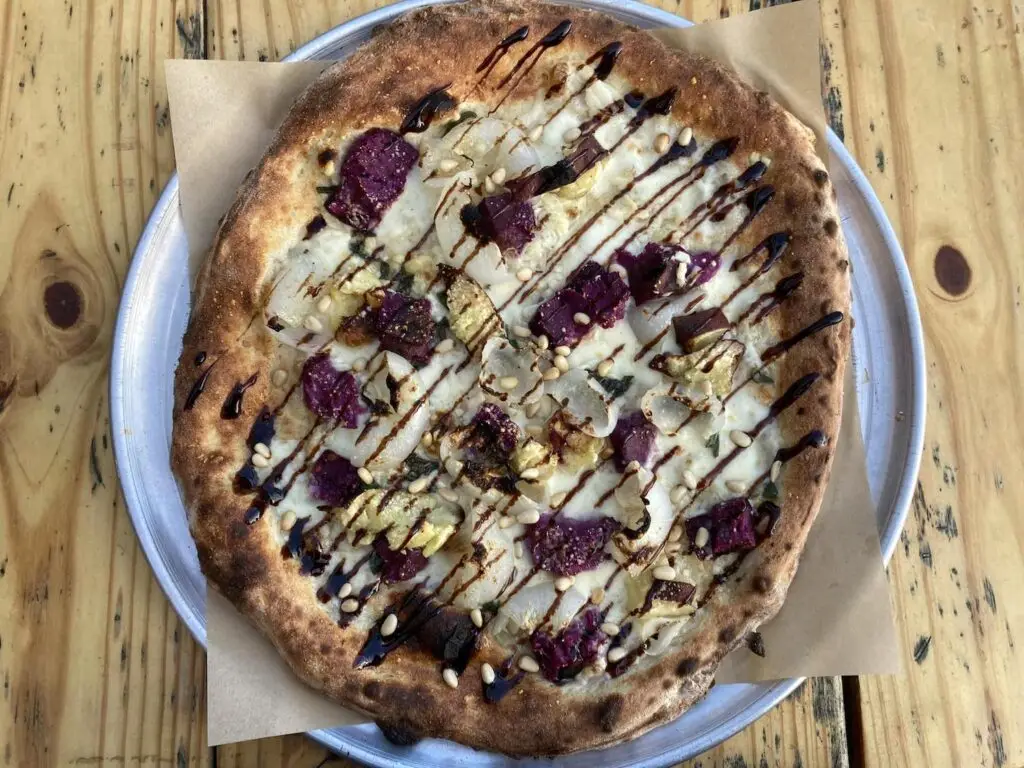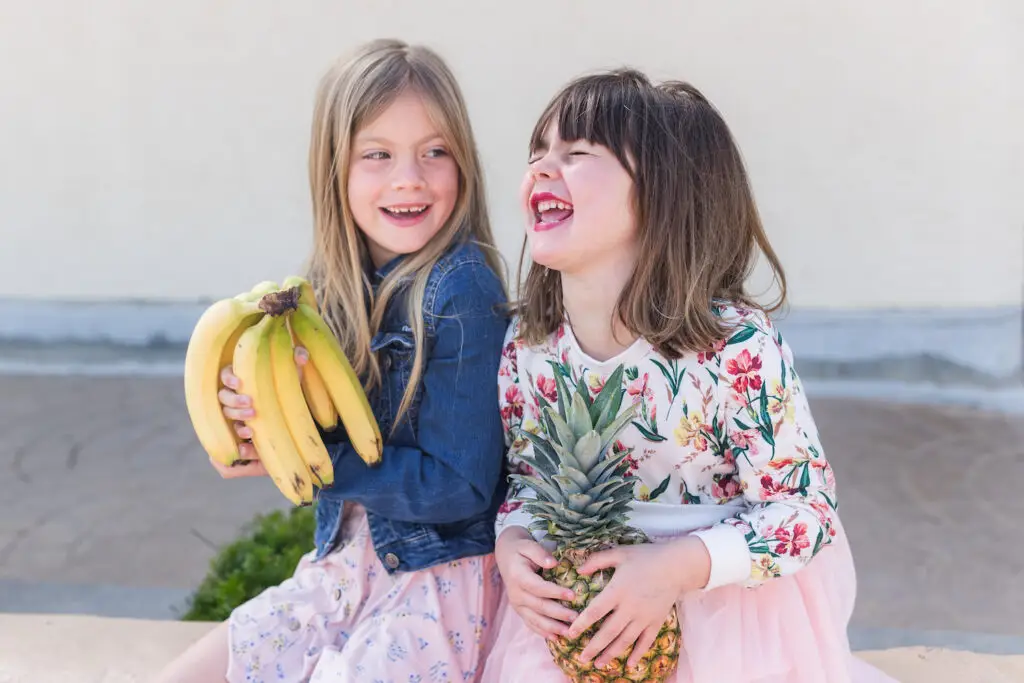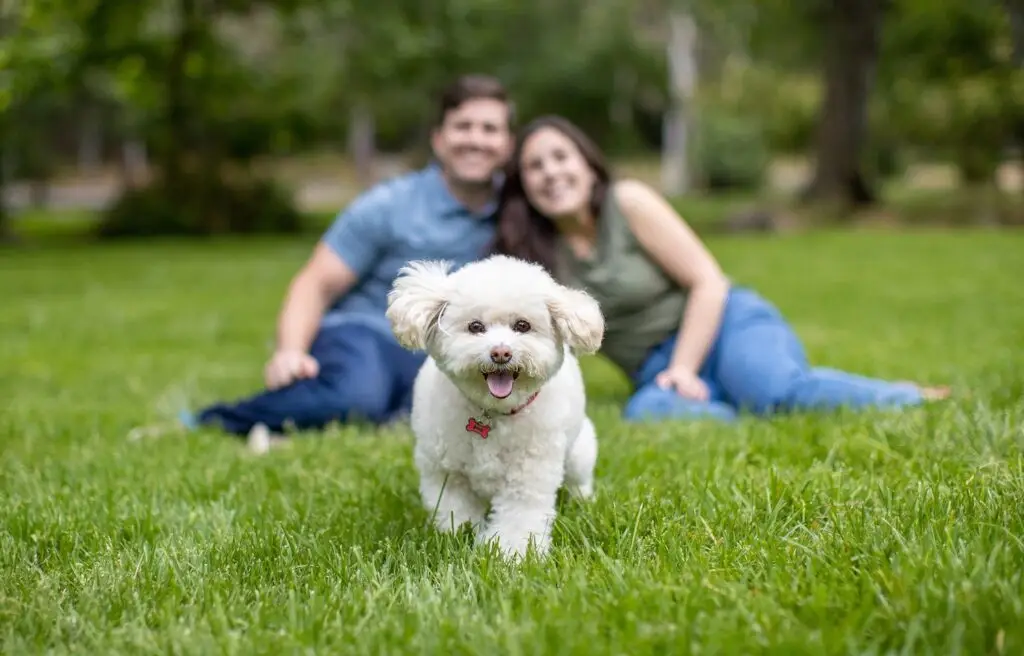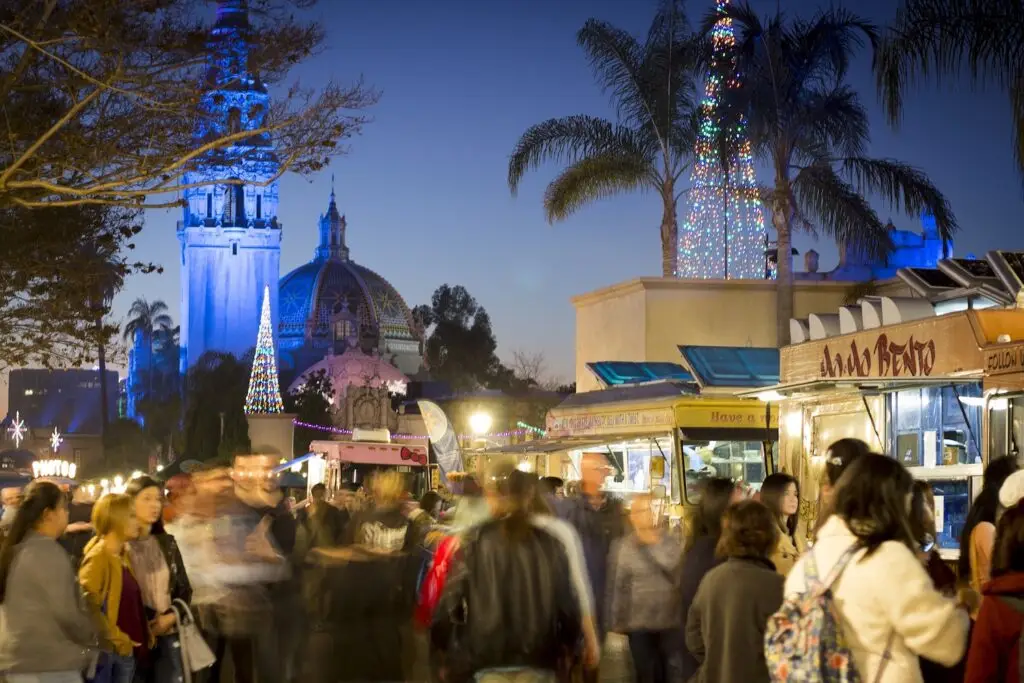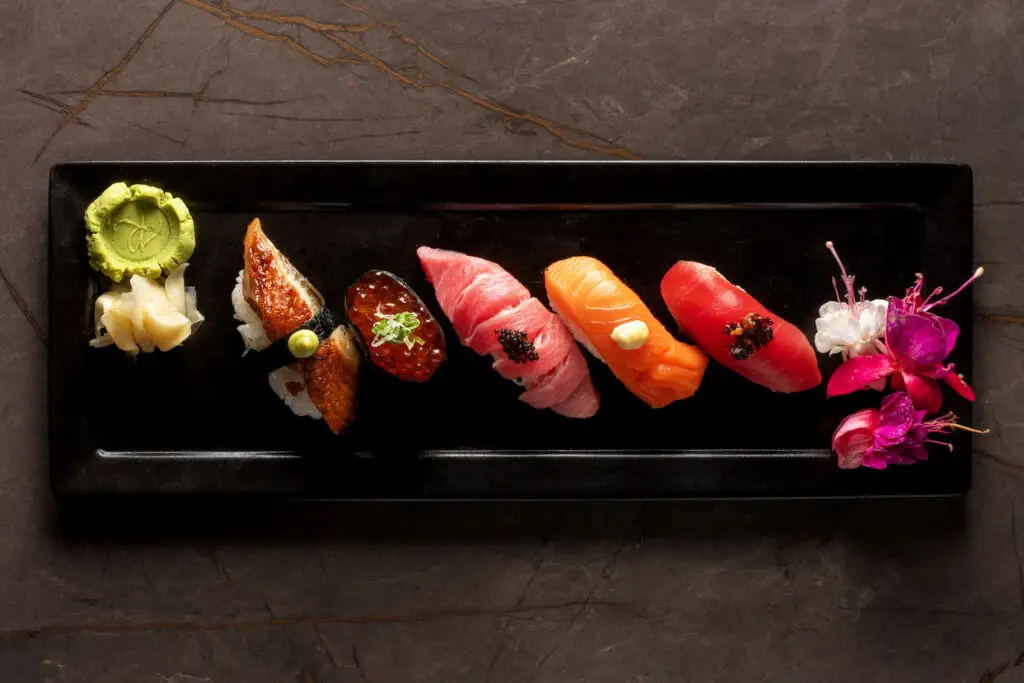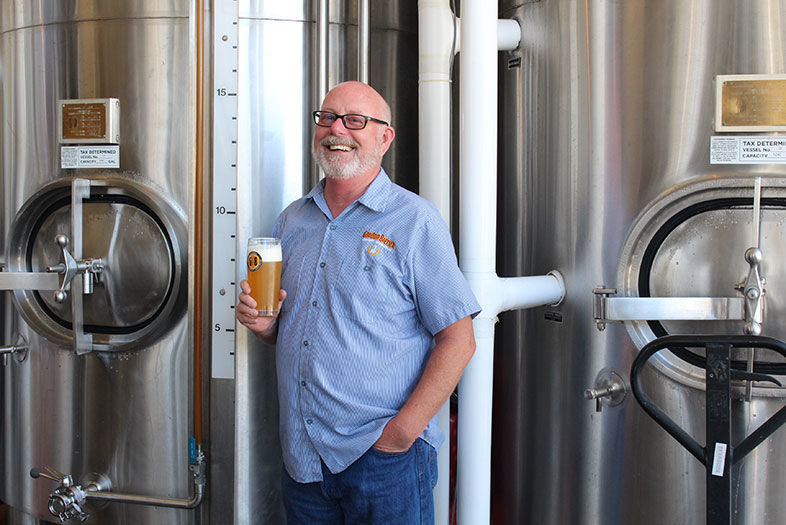For the longest time, the brewers at Gordon Biersch were restricted to brewing only classic European lager styles, brewing them only to the traditional standards and with the traditional methods. These original directives came down directly from company co-founder and brewmaster, Dan Gordon, who learned brewing in Germany and was dedicated to reproducing European styles faithfully in the United States. But times change, and with them so do tastes. Recently, brewers at Gordon Biersch have been given the go-ahead to get hoppy and to brew ales that will appeal to a wider audience of San Diego beer fans. This is a big move for the company, but it is also a testament to the fact that a brewery is never too big or too established to innovate and react to a changing marketplace.
For Doug Hasker, who oversees the brewing for Gordon Biersch in Mission Valley, this new freedom to make ales has opened up an exciting world of possibilities, and a wealth of new flavors to enjoy. I sat down in the GB beer garden with Doug to talk about how his brewing strategy has changed and what he’s into now:
So, let’s start with why you guys were restricted for so long to only doing lagers.
Well, it was Dan Gordon. The two founders of the company are Dean Biersch, who is the restaurant guy, and Dan Gordon, who has a five-year degree from Weihenstephan, near Munich, which is the highest accredited lager brewing school in the world. When Dean and Dan opened their first brewpub in 1988, brewpubs had only been legal for four years, so they were one of the first of their kind in America. And Dan was very German when it came to beer, in that his philosophy is that beer should only have four ingredients: water, malted barley, hops, and yeast.
And so you learned to brew under Dan’s tutelage, right?
Yeah, and I didn’t really know much to start. I had made homebrew beer when I visited my uncle’s farm in South Dakota, while in high school. Then my dad let me make it when I came home, but I was using Fleischmann’s yeast and canned malt and whatever. It wasn’t good. So, I really learned from Dan. He hired people who had very little experience because he wanted to train them in his fashion, which is the Weihenstephan fashion. And he did a good job. I’ve since taken a lot of other classes and certifications, and now I even teach one of the classes at UCSD.
When did things start to change? After all these years of doing lagers, when did you get the green light to start branching out?
About a year-and-a-half ago. On this side of the company, we thought it was odd that Dan wasn’t following the trends of business. We saw the industry growing around Gordon Biersch. Dan’s brewery [in San Jose] is one of the most beautiful breweries you’ll ever see. He opened it in 1997 and was way ahead of the game, before Firestone Walker and before Lagunitas. It’s a big, beautiful brewery, but the industry has been growing around him because people aren’t buying lagers—they’re buying IPAs. So, we knew for us to survive on the restaurant side, especially here in San Diego, we had to be able to make some sort of ales—IPAs or West Coast styles, or anything, really. We have stores in Denver and Seattle and on the East Coast (34 locations all together) and everybody knows beers in those places. And they would come in and say, “Can I have an IPA?” and we would say, “Well, we have a pilsner.”
We still think that lagers are real beers, and we all still think that everybody’s going to go back to lagers some day. We know that tastes are always cyclical, and people will always come back to lagers.
Are you starting to create a lot of totally new recipes here now?
Yeah, now that the “ales box” has been opened. It took us years to talk Dan into it, but I had already started learning from all of my brewer friends how to make West Coast-style beers—so I had already been doing ales a little bit. It’s quite different. Reinheitsgebot [the German purity laws that govern traditional brewing] say you can’t add anything after the brew kettle so, according to that, you can’t add hops. Finally, now, Dan’s okay with it. The brewers in the company still have to make some of the original recipes, like the Helles beer and the Marzen Oktoberfest, but everything else we can change. I’ll still make the schwarzbier, the dunkelbier, the pilsner, and the hefeweizen, along with others.
You are particularly lucky in that you have a panel of dozens of great brewers to consult with. What’s the most exciting thing about making ales as opposed to making lagers?
Well, of course, dry hopping. One of the cool things I’ve been trying, which not too many other people have been doing, is using German malt profiles with West Coast hopping and West Coast ale yeast. You know, I decided—when I did my first out-of-the-box ale about four or five years ago—I decided I wanted to make an AleSmith X. So I talked to everybody in town, everyone except Peter Zien from AleSmith, because I didn’t want to steal. I found out it was going to be much harder than I had thought. You know, a German would say brewing is all about making “clean” beer—one of the hardest beers on the planet to make is a Helles because it’s so clean and you can’t mask it with anything. And my thinking about ale brewers had always been that they’re just making these big hoppy beers, but I had no idea what the complexities were on the hop side. Then I started learning about dry-hopping… there’s so much that’s involved. So I’m learning from all the other brewers about the complexities of hops. That’s the most challenging for me; it’s the fact that the hop is at the heart of getting it right. But, again, I also have a wealth of knowledge all around me. I can call up anybody at any time, and get advice.
Is there a hop that you’re particularly excited about? One that you’d never worked with before that you’re amazed by?
Wakatu is pretty amazing. It’s from Nelson, New Zealand. It’s really grapefruity, and it’s awesome. And also Bravo. Most of what I’ve been using is what guys around here have been using for years; Cascade, Amarillo, Centennial, Simcoe, Citra. And that’s something I’ve been learning, too: how to balance the different hops—how to balance the citrus versus the piney. It’s all new to me.
So what’s some of the best advice you’ve gotten from the other guys about working with hops?
Don’t overdo it. And it doesn’t matter what hop you use for bittering, as long as it’s a lot. It’s really the aromatics and the dry-hopping that matter most.
Will you ever play with the classic styles and, say, do a super-hoppy schwarzbier or something like that?
Yeah. Absolutely. Right now I’m trying to distinguish my beers by doing things as simple as cooking the grain rather than steeping it like everybody else does. It’s giving me an IPA or a pale ale that’s different from what everybody else is making. I made a beer using The Harlot yeast from Societe for my Belgian wit beer, and the only difference was the grain profiles—I used like 55% wheat and I think Travis uses maybe 30%—but the beers were completely different because I actually decocted that batch [cooked the grain] which gives it a thicker malt side and better head retention. I also naturally carbonate all my beers, which sets me apart a bit. So that’s what I’m trying to do differently.
What’s on your list to do next?
I want to do a Mosaic beer, everybody’s done one, but I want to do mine. See what it’s about.
So now you’re in a world where hops can be front and center.
I didn’t even like them forever! I remember about five years ago I was up in Normal Heights, at a bar on a hot afternoon, and I ordered a Sculpin for some reason. And when I tasted it, I turned a corner. I texted Colby [Chandler] and I told him I was drinking a Sculpin on a hot day, at Rosie O’Grady’s. I said not only is it excellent, it’s refreshing. I never knew a really hoppy beer could be that quenching and satisfying. And he texted me back and he said, “Welcome to the dark side.” We still laugh about that, he and I.
So, it sounds like getting into the world of ales is a little like therapy for you, in that you can let the highly regulated, strictly defined, German side slide a bit and get creative.
It’s fun. And it’s new and exciting. My boss called me a couple of months ago and he said, “What are you doin’?” and I said I was brewing a Marzen… for the billionth time. It’s fun to be brewing something else. The brewery smells different when I’m brewing these beers. And the ales are what I’m drinking now. It’s rejuvenated my interest in brewing, really.
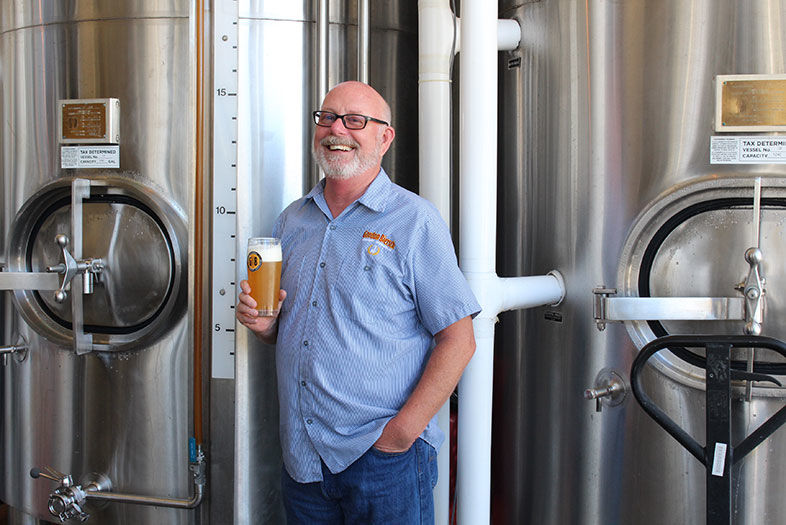
Have a Beer with Gordon Biersch Brewer Doug Hasker
PARTNER CONTENT
Doug Hasker | Photo by Bruce Glassman
